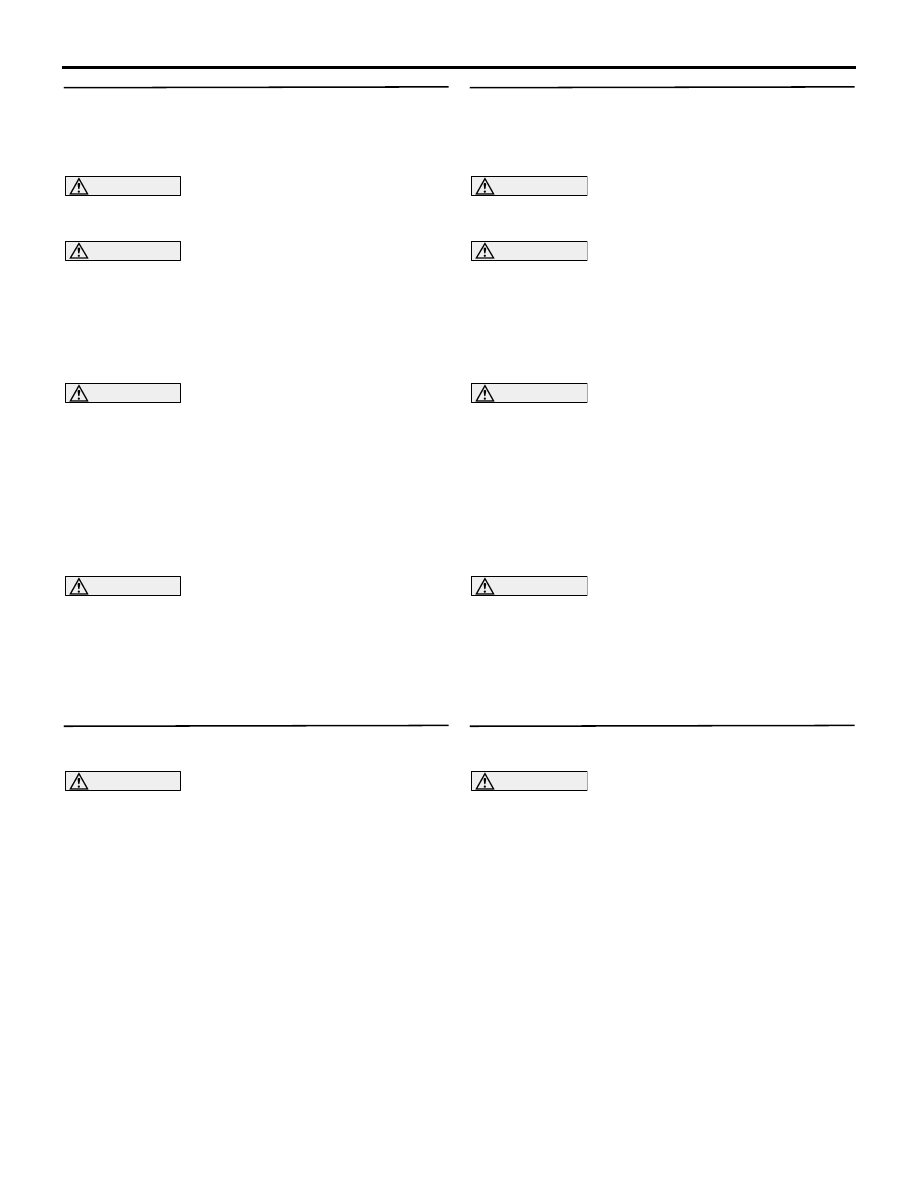Mitsubishi Outlander (2013+). Manual - part 731

TROUBLESHOOTING
CONTROLLER AREA NETWORK (CAN)
54C-60
STEP 14. Resistance measurement at joint
connector (CAN-LO).
NOTE: Steps 14 and 15 are only for vehicles with
OSS. On vehicles without it, go to Step 16 .
CAUTION
A digital multimeter should be used. For details
refer to
CAUTION
The test wiring harness should be used. For
details refer to
(1) Disconnect joint connector (CAN-LO), and
measure at the wiring harness side.
(2) Turn the ignition switch to the LOCK (OFF)
position.
CAUTION
When measuring the resistance, disconnect the
negative battery terminal. For details refer to
.
(3) Ensure that the negative battery terminal is
disconnected.
(4) Resistance between joint connector (CAN-LO)
terminal Nos.10 and 21
OK: 1 k
Ω or more
CAUTION
Strictly observe the specified wiring harness
repair procedure. For details refer to
Q: Is the check result normal?
YES :
<1 k
Ω or more> Go to Step 16.
NO :
<Less than 1 k
Ω> Go to Step 15.
STEP 15. Resistance measurement at OSS-ECU
connector.
CAUTION
A digital multimeter should be used. For details
refer to
(1) Remove the OSS-ECU, and measure at the
equipment side.
(2) Resistance at OSS-ECU connector terminal
Nos.1 and 14
OK: 1 k
Ω or more
Q: Is the check result normal?
YES :
<1 k
Ω or more> Repair the wiring harness
between joint connector (CAN-LO) and the
OSS-ECU connector.
NO :
<Less than 1 k
Ω> Check the OSS-ECU
connector, and repair if necessary. If the
OSS-ECU connector is in good condition,
replace the OSS-ECU.
STEP 16. Resistance measurement at joint
connector (CAN-LO).
NOTE: Steps 16 and 17 are only for vehicles with
KOS. On vehicles without it, go to Step 18 .
CAUTION
A digital multimeter should be used. For details
refer to
CAUTION
The test wiring harness should be used. For
details refer to
.
(1) Disconnect joint connector (CAN-LO), and
measure at the wiring harness side.
(2) Turn the ignition switch to the LOCK (OFF)
position.
CAUTION
When measuring the resistance, disconnect the
negative battery terminal. For details refer to
.
(3) Ensure that the negative battery terminal is
disconnected.
(4) Resistance between joint connector (CAN-LO)
terminal Nos.5 and 16
OK: 1 k
Ω or more
CAUTION
Strictly observe the specified wiring harness
repair procedure. For details refer to
Q: Is the check result normal?
YES :
<1 k
Ω or more> Go to Step 18.
NO :
<Less than 1 k
Ω> Go to Step 17.
STEP 17. Resistance measurement at KOS-ECU
connector.
CAUTION
A digital multimeter should be used. For details
refer to
(1) Remove the KOS-ECU, and measure at the
equipment side.
(2) Resistance at KOS-ECU connector terminal
Nos.2 and 3
OK: 1 k
Ω or more
Q: Is the check result normal?
YES :
<1 k
Ω or more> Repair the wiring harness
between joint connector (CAN-LO) and the
KOS-ECU connector.
NO :
<Less than 1 k
Ω> Check the KOS-ECU
connector, and repair if necessary. If the
KOS-ECU connector is in good condition,
replace the KOS-ECU.